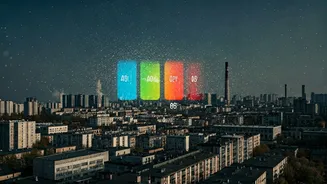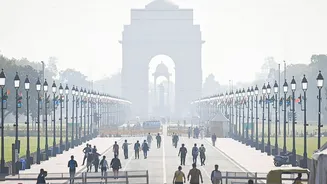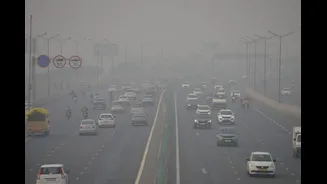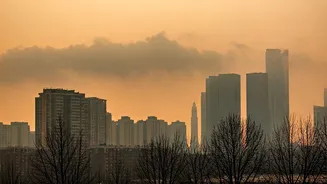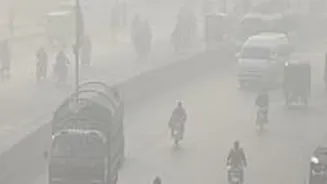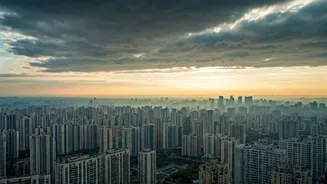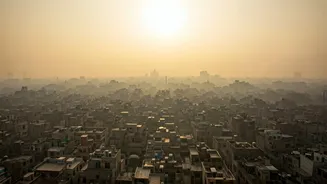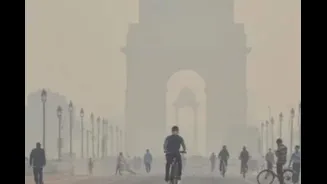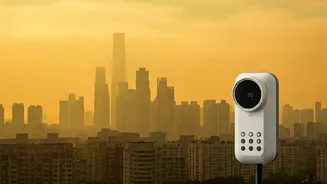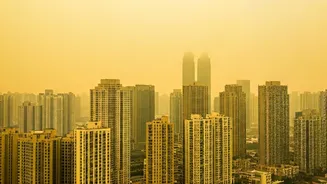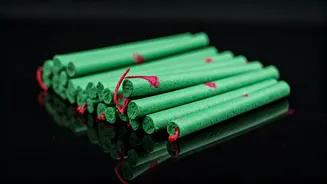Air Quality Declines
The air quality across Delhi-NCR witnessed a concerning dip, leading to the enforcement of stricter pollution control measures. The Air Quality Index (AQI)
reflected a 'very poor' categorization, signaling a significant increase in particulate matter and other pollutants. The worsening air quality was a pressing issue, especially with Diwali celebrations approaching. This prompted environmental authorities to take immediate action, focusing on containing the pollution before it worsened further, to protect the health of the residents. The prompt implementation of the GRAP II measures demonstrated the government's commitment to prioritizing public health amid the festive season.
GRAP II Implemented Swiftly
In response to the declining air quality, the authorities rapidly deployed GRAP II measures. These measures, part of the Graded Response Action Plan (GRAP), are designed to tackle escalating pollution levels through a series of increasingly stringent actions. The rapid implementation indicated the urgency of the situation. This level of responsiveness was crucial in mitigating the immediate effects of the poor air quality and in preventing further deterioration. The swiftness in putting these measures into effect showed a commitment to containing pollution and protecting residents, particularly during a time of increased potential for air quality issues. The plan had specific guidelines that were triggered when the AQI crossed certain thresholds.
Key GRAP II Actions
GRAP II involves a comprehensive strategy that targets several key sources of pollution. Among the actions taken were restrictions on construction and demolition activities, which can significantly contribute to airborne dust. The authorities also focused on controlling emissions from industrial sources and ensuring that waste burning was strictly prohibited. Furthermore, measures were implemented to enhance the monitoring of pollution levels and to provide real-time information to the public. These actions collectively aimed to curb the release of pollutants and improve the air quality. The measures, along with continuous monitoring and public awareness, were vital in the battle against pollution in the region.
Diwali's Potential Impact
The period around Diwali often presents unique challenges for air quality management. The festival is associated with increased emissions from firecrackers, leading to a spike in particulate matter and other pollutants. Recognizing this, the authorities focused on measures to regulate firecracker usage. They urged people to avoid using them, while enforcement teams actively worked to minimize violations. These measures were crucial in order to try and control the pollution levels and safeguard public health. The authorities were determined to minimize the impact of Diwali on the air quality, safeguarding residents' health during the festivities. The measures, alongside public awareness, were critical to keep pollution at bay.
Public Health Focus
The primary objective behind implementing GRAP II was to protect public health, especially of vulnerable groups such as children, the elderly, and those with respiratory ailments. The poor air quality posed severe health risks. The authorities focused on communicating the risks and providing guidance to the public. This included advising people to stay indoors where possible and to avoid strenuous outdoor activities during periods of high pollution. The public health focus demonstrated the seriousness of the situation. By disseminating clear guidance and implementing control measures, the authorities aimed to mitigate the health risks and ensure a safer environment for everyone. Their efforts were geared towards minimizing health risks and ensuring a safer environment for all.
Monitoring and Enforcement
To ensure that the GRAP II measures were effective, the authorities strengthened their monitoring and enforcement mechanisms. Environmental monitoring teams were deployed to assess air quality levels regularly. Simultaneously, enforcement squads were tasked with ensuring compliance with the regulations. They targeted violations such as illegal construction activities, industrial emissions, and the burning of waste. The continuous monitoring and stringent enforcement served as a crucial part of the strategy. It helped maintain a level of discipline, deterring the activity that could have further deteriorated the air quality. This also helped to ensure that the measures were being effectively implemented, helping to improve the environmental conditions during a critical period.
